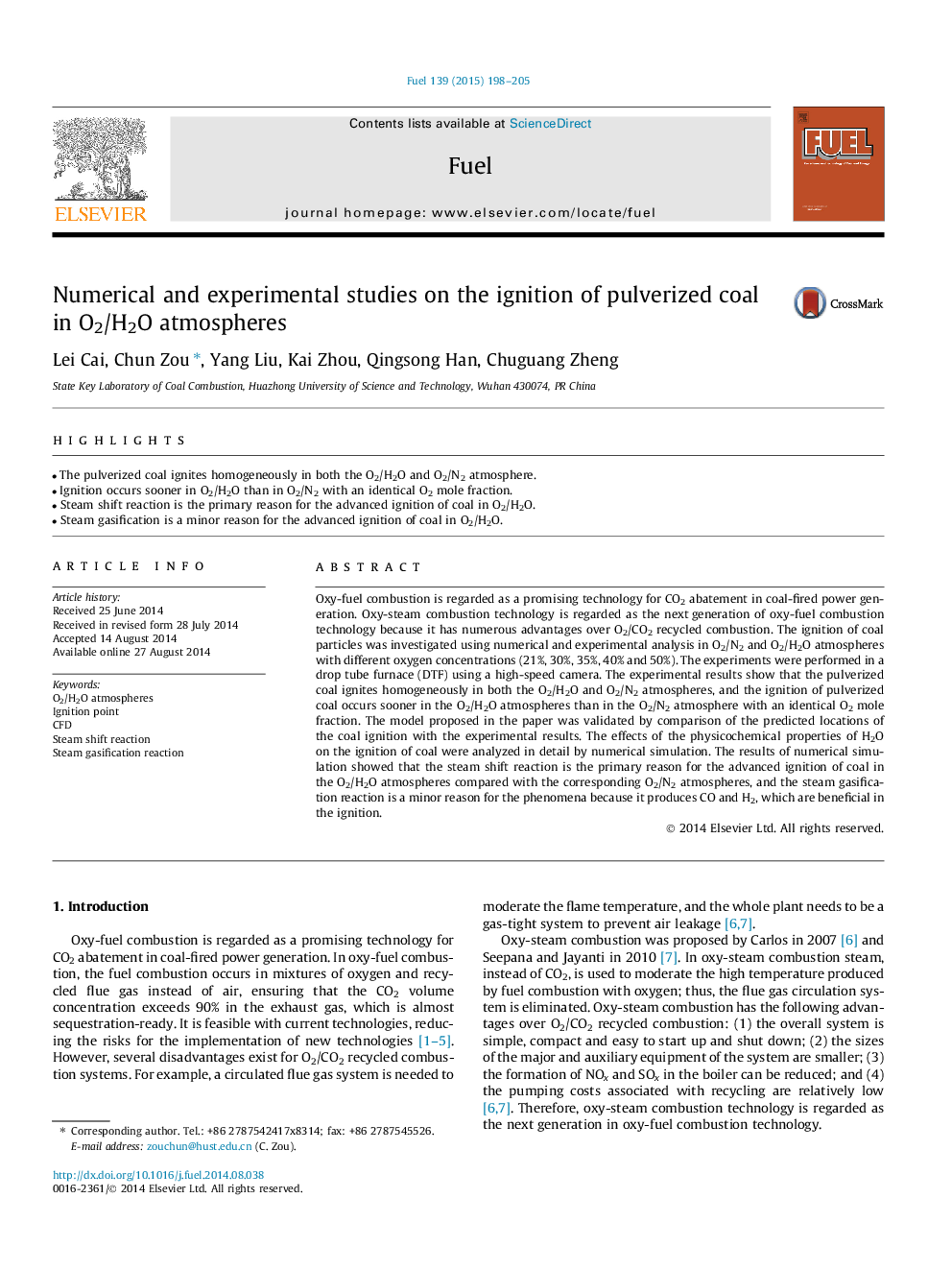| Article ID | Journal | Published Year | Pages | File Type |
|---|---|---|---|---|
| 6636452 | Fuel | 2015 | 8 Pages |
Abstract
Oxy-fuel combustion is regarded as a promising technology for CO2 abatement in coal-fired power generation. Oxy-steam combustion technology is regarded as the next generation of oxy-fuel combustion technology because it has numerous advantages over O2/CO2 recycled combustion. The ignition of coal particles was investigated using numerical and experimental analysis in O2/N2 and O2/H2O atmospheres with different oxygen concentrations (21%, 30%, 35%, 40% and 50%). The experiments were performed in a drop tube furnace (DTF) using a high-speed camera. The experimental results show that the pulverized coal ignites homogeneously in both the O2/H2O and O2/N2 atmospheres, and the ignition of pulverized coal occurs sooner in the O2/H2O atmospheres than in the O2/N2 atmosphere with an identical O2 mole fraction. The model proposed in the paper was validated by comparison of the predicted locations of the coal ignition with the experimental results. The effects of the physicochemical properties of H2O on the ignition of coal were analyzed in detail by numerical simulation. The results of numerical simulation showed that the steam shift reaction is the primary reason for the advanced ignition of coal in the O2/H2O atmospheres compared with the corresponding O2/N2 atmospheres, and the steam gasification reaction is a minor reason for the phenomena because it produces CO and H2, which are beneficial in the ignition.
Keywords
Related Topics
Physical Sciences and Engineering
Chemical Engineering
Chemical Engineering (General)
Authors
Lei Cai, Chun Zou, Yang Liu, Kai Zhou, Qingsong Han, Chuguang Zheng,
